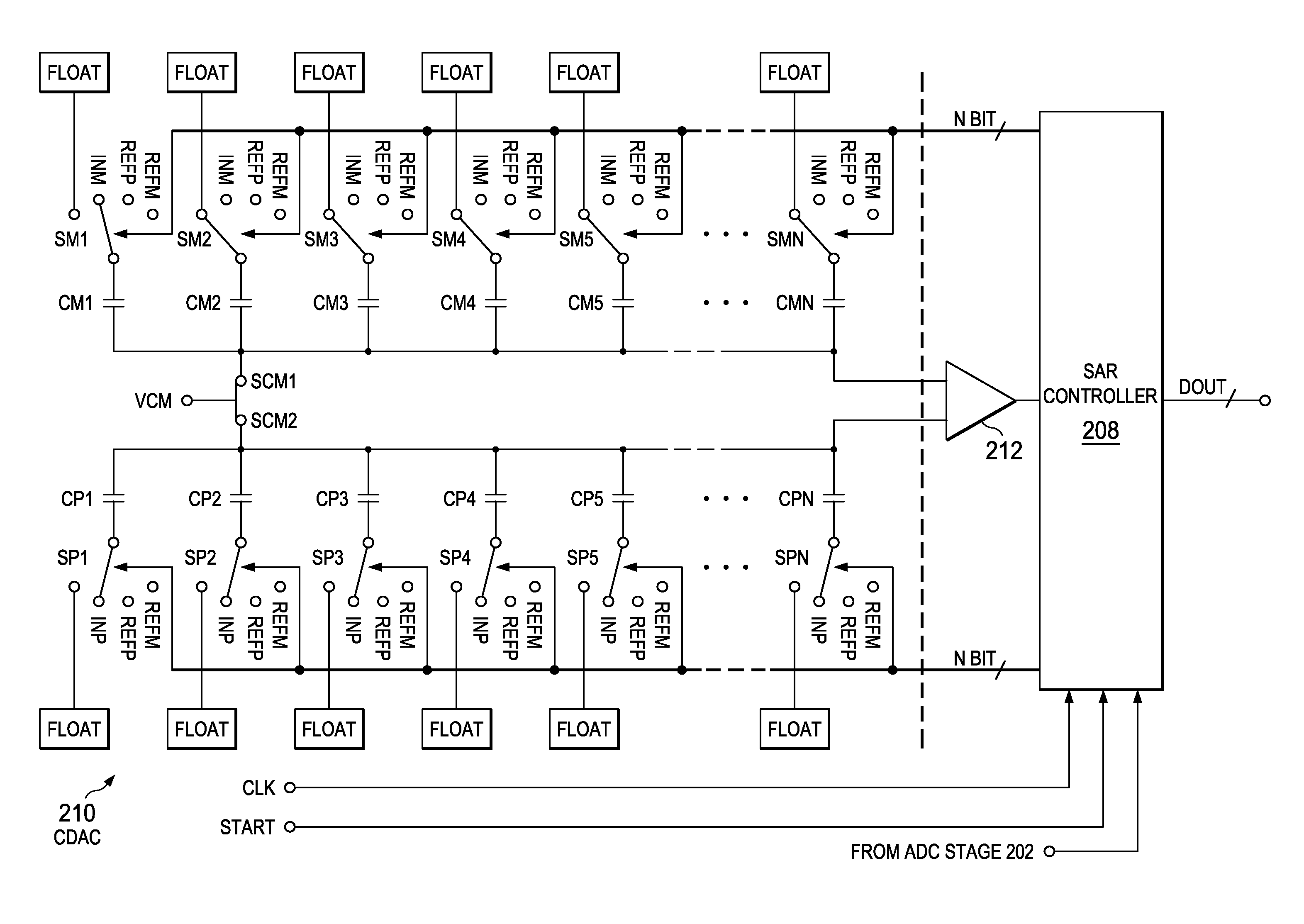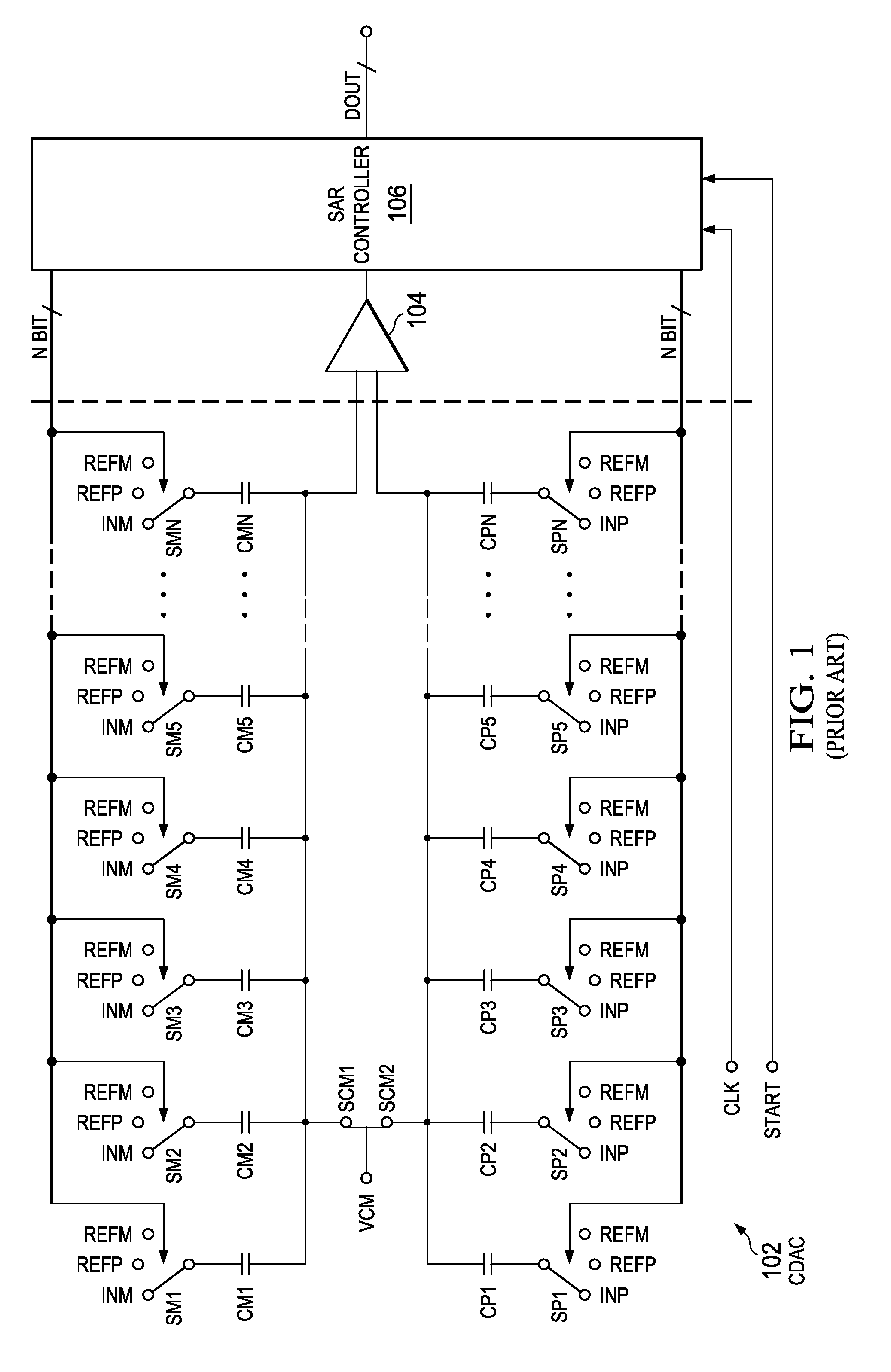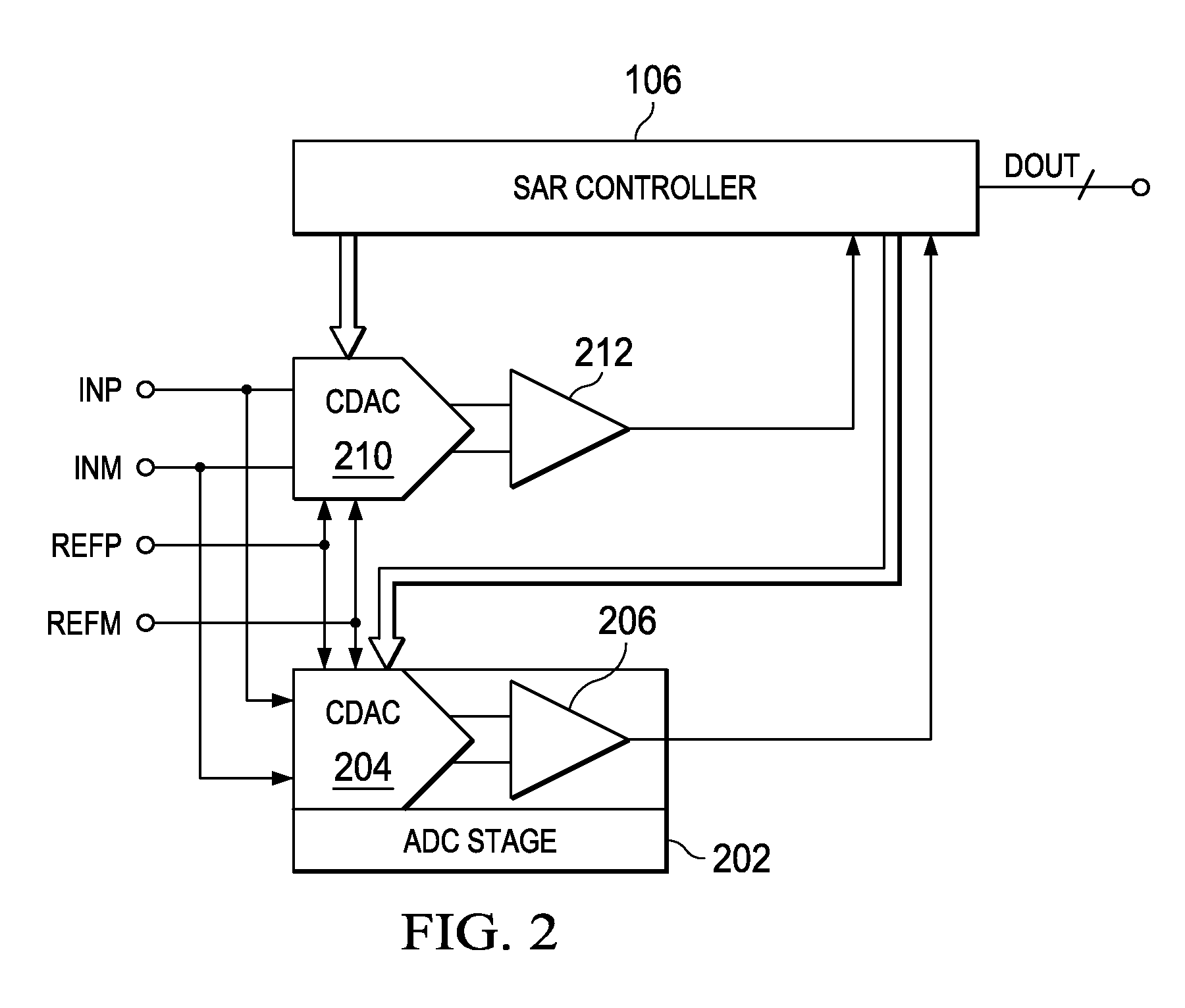SAR ADC
- Summary
- Abstract
- Description
- Claims
- Application Information
AI Technical Summary
Benefits of technology
Problems solved by technology
Method used
Image
Examples
Embodiment Construction
[0023]Refer now to the drawings wherein depicted elements are, for the sake of clarity, not necessarily shown to scale and wherein like or similar elements are designated by the same reference numeral through the several views.
[0024]Referring to FIG. 2 of the drawings, the reference numeral 200 generally designates a successive approximation register (SAR) analog-to-digital converter (ADC) in accordance with a preferred embodiment of the present invention. A first ADC stage may include a switch capacitor array or capacitive digital-to-analog-converter (CDAC) 210 for evaluating bits of an analog-to-digital conversion. The array 210 may be coupled to comparator 212. Comparator 212 outputs a signal to a SAR controller 208, which may indicate the comparison result of comparator 212. ADC stage 202 can also be coupled to the SAR controller 208.
[0025]ADC stage 202 may be any kind of ADC stage. However, as shown, ADC stage 202 generally includes a CDAC or switched capacitor array 204 and co...
PUM
 Login to View More
Login to View More Abstract
Description
Claims
Application Information
 Login to View More
Login to View More - Generate Ideas
- Intellectual Property
- Life Sciences
- Materials
- Tech Scout
- Unparalleled Data Quality
- Higher Quality Content
- 60% Fewer Hallucinations
Browse by: Latest US Patents, China's latest patents, Technical Efficacy Thesaurus, Application Domain, Technology Topic, Popular Technical Reports.
© 2025 PatSnap. All rights reserved.Legal|Privacy policy|Modern Slavery Act Transparency Statement|Sitemap|About US| Contact US: help@patsnap.com



